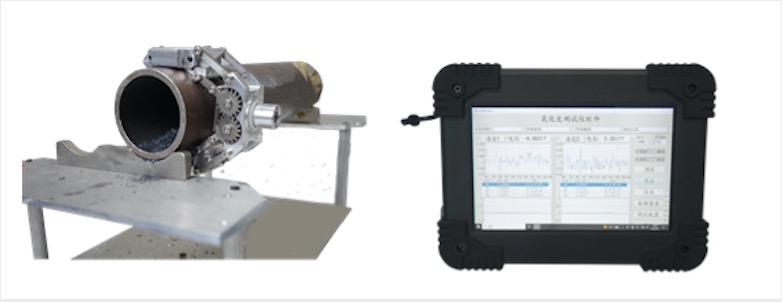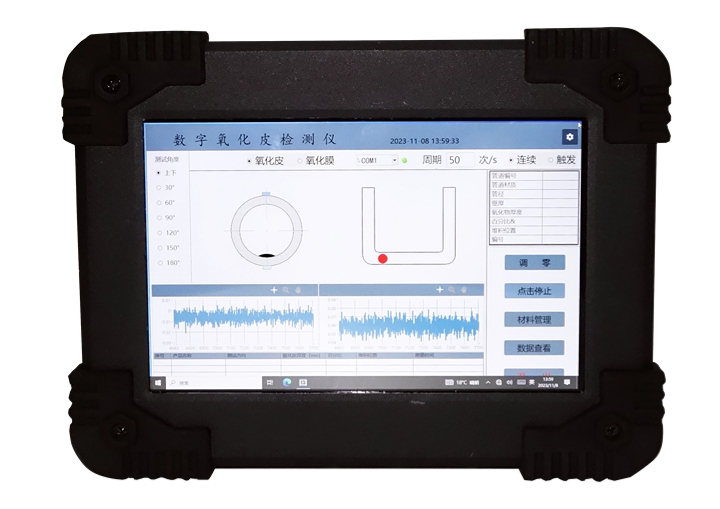

1.Device principle
Based on the significant disparity in magnetic properties between boiler pipes and oxide, an external magnetic field is applied to the measured bend pipe of the boiler. After withdrawing the external magnetic field, residual magnetic induction intensity and lifting force of oxide in the bend pipe are detected using Hall effect and stress sensors. This enables establishing a mapping relationship between the detection signal value and the amount of oxide accumulation in the bend pipe, facilitating nondestructive testing and evaluation of oxide deposition in boiler bends.

The relationship between remanent magnetic induction intensity and lifting force and the amount of oxide deposition
During detection, the experimental method of utilizing 3 azimuth measuring points is employed to eliminate non-uniformity caused by monostable excitation magnetic fields. The probe is positioned at a 30°forward angle to detect bending and record walking length; upon reaching the endpoint, the probe detects bending in reverse at 0°and records length; after returning to the starting point, the probe is positioned at a 330°forward angle to detect bending and record length. Data is collected once every 20mm with a collection frequency not exceeding 100Hz. The three sets of detection data are stored in the host computer and used to form 3D pipe images that display oxide accumulation patterns. These data and graphics can be saved or exported through USB or SD card, as well as transferred out in real-time via serial port/485.

The interface for detecting oxide accumulation
2.Performance characteristics
① Quantification of detection data: The oxide thickness and percentage of pipeline space are digitally displayed, while the accumulation position is graphically displayed. This provides a simple and intuitive real-time view with zero function.
② Refinement and specialization of detection: Parameters such as pipe material, pipe diameter, and pipe wall thickness can be set to enhance the accuracy of test results.
③ Automatic generation of test reports: Data management is optimized, facilitating easy querying. Test item number, test part number, test tube screen number, test tube number, and test position number (can be represented by an image) can be inputted. Upon completing a test and pressing confirm, the next screen number information automatically pops up. The inspection report is then inserted into a template which includes details such as inspection time, parts inspected individually with their respective oxide volume, mass, cross-sectional area measurements along with pictures. Additionally supports saving detection data as well as import/export functions while allowing for error correction or deletion of duplicate data.
④ The weight of the device is less than 2kg, and battery capacity is more than 8h. The structure is simple and easy to operate.
⑤ The detection speed of the device is fast, and there is no need to perform surface treatment on the measured object. Its high sensitivity can accurately reflect the small changes in the amount of oxide in the pipeline.
⑥ Austenitic stainless-steel pipes can be detected, such as HR3C, SUPER304, TP347HFG, TP347H, TP304, etc. It can detect not only oxide, but also ferromagnetic foreign bodies from other sources.